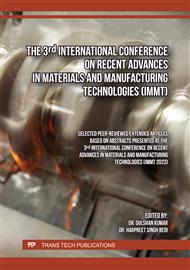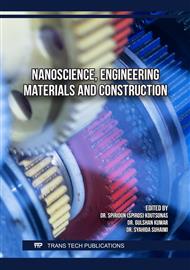p.3
p.11
p.21
p.29
p.39
p.51
p.59
p.79
p.91
Predictive Modeling of Half-Metallicity in Heusler Compound through Machine Learning Modeling
Abstract:
Heusler alloys are intermetallic compounds formed in two combinations: Full-Heusler (X2YZ) and Half-Heusler (XYZ). X and Y can be any transition element, and Z belongs to the main group. This shows that there can be a huge variation in the combinations, leading to various properties and applications. We aimed at predicting the combination leading to shape memory properties using machine learning tools and then synthesizing the same. The predictions are done by training the tool with input data. We employed the lattice strain, valence electron concentration ratio, mechanical stress, difference in entropy, and saturation magnetization as input features. The correlation between the martensitic and austenitic temperature was evaluated in terms of regression metrics. The random forest and decision tree modeling were executed. Test scores were obtained using frequency ordering, PCA, linear regression, and correlation matrix to forecast magnetically controlled shape memory effect. The silhouette score matched the transition temperature at which the material showed shape memory behavior. Additionally, from 70% of the training data, a combination of Iron (Fe), Nickel (Ni), and Aluminum (Al) as Full Heusler alloys stimulated the algorithms in gaining the accuracy of predictive modeling by minimizing the error. Through DFT-based bandgap and density of states calculations, the Fe2NiAl Heusler compound is hypothesized to behave as a half-metallic ferromagnet by considering the atomic number, the number of valence electrons, and the local magnetic moment. The experimental validation will be done along with magnetization studies, magneto-transport, and magneto-caloric measurements.
Info:
Periodical:
Pages:
39-50
Citation:
Online since:
April 2025
Authors:
Price:
Сopyright:
© 2025 Trans Tech Publications Ltd. All Rights Reserved
Share:
Citation:



